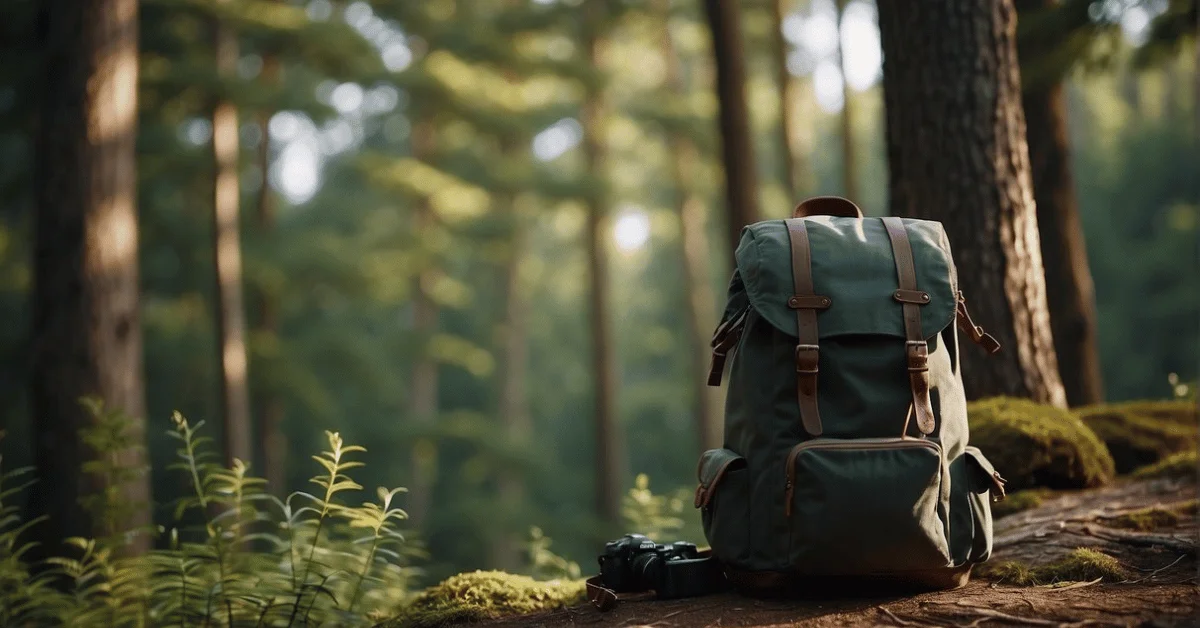Minimalist backpacking is an increasingly popular approach to travel that focuses on simplicity, allowing for greater freedom and peace of mind on the road.
Carrying only what’s essential, we embrace a minimalist mindset, shedding the unnecessary to experience the world with less weight on our shoulders. It’s not merely about having fewer belongings; it’s a transformative practice that challenges us to reconsider what we truly need.
This liberating style of travel offers an antidote to the often overwhelming clutter of daily life. By choosing to pack less, we find ourselves less encumbered, both physically and mentally, able to move more freely and adapt to changing circumstances with ease. The result is a purer form of adventure, where we can focus on the experiences and the people we encounter, unburdened by excess.
Key Takeaways
- Minimalist backpacking enhances travel freedom and clarity of mind.
- Adopting a minimalist mindset is key to successful minimalist backpacking.
- Strategic packing and planning are crucial for a safe and efficient trip.
Understanding Minimalist Backpacking
In 2023, we’re witnessing a significant shift toward minimalist travel, a style that enhances happiness and health through the art of carrying less. By choosing only what is essential, we experience the liberation and efficiency that minimalist backpacking offers.
The Minimalist Philosophy
The core of the minimalist philosophy is downsizing to the basics. Imagine unpacking not just your backpack but also your life, retaining only what serves a purpose or brings joy. This compact approach to travel reflects a broader mindset that values quality over quantity and experiences over possessions. It’s a deliberate choice to prioritize sustainability and self-sufficiency, recognizing that freedom in travel comes from the ability to move lightly.
Benefits of Minimalist Travel
Minimalist travel offers tangible advantages that impact both our well-being and finances. The clarity of packing only the necessities reduces stress, giving us a simpler set of choices and a clearer mind. Physically, carrying less means less strain on our bodies, contributing to better health on the road. And, there’s an economic side: traveling light often translates to lower baggage fees, and the simplicity can lead to cheaper travel overall. Moreover, the joy of unencumbered movement and the deepened connection with our destinations speak directly to our pursuit of happiness while exploring the world.
Our Guide on Choosing the Right Backpack
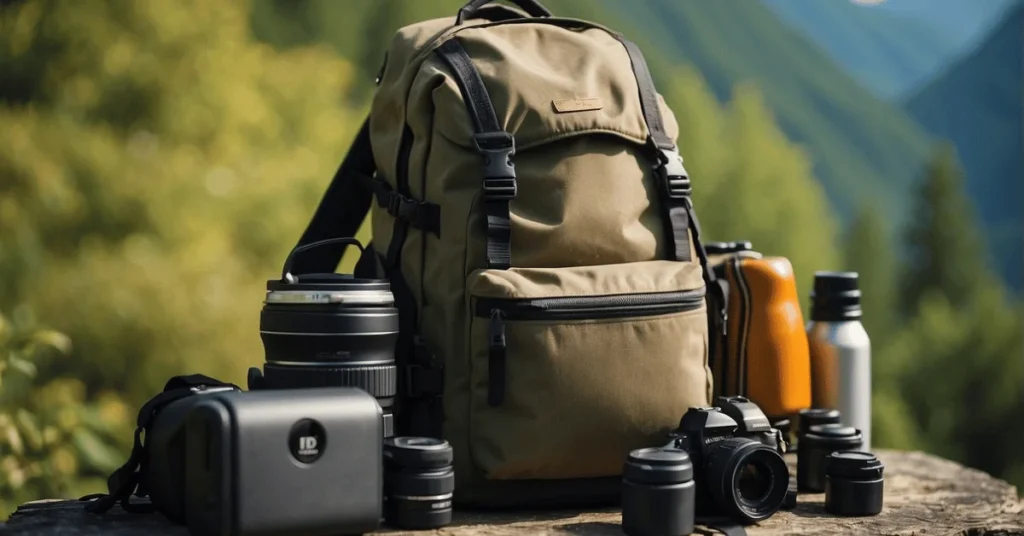
When embarking on minimalist travel, picking the right backpack is crucial. We’ll explore the key features to look for in a minimalist backpack, compare the pros and cons of using a backpack instead of a suitcase, and recommend some of the best models for your next adventure.
Key Features of Minimalist Backpacks
Minimalist backpacks prioritize essential design: durability, comfort, and functionality. Look for rip-resistant materials, ergonomic straps, and a padded laptop compartment if you’re tech-savvy. Compartmentalization is paramount, as these packs often feature smart pockets and sleeves to organize belongings efficiently. When considering capacity, a carry-onsize around 40 liters is typically adequate for most needs.
Backpack vs. Suitcase
For ease of mobility and flexibility, backpacks trump suitcases. They’re hands-free, enable faster movement, and can be used as a daypack once you’ve arrived at your destination. Plus, a backpack like the Tortuga Outbreaker Backpack fits easily in overhead compartments, sparing you from check-in hassles.
Top Minimalist Backpack Recommendations
Our top picks include the Nomatic Travel Pack for its sleek design and versatility, and the Osprey Farpoint 40 for its balance of comfort and durability. These backpacks represent the pinnacle of minimalist design, ensuring that your travel is unhindered by bulky luggage.
Our Packing Essentials
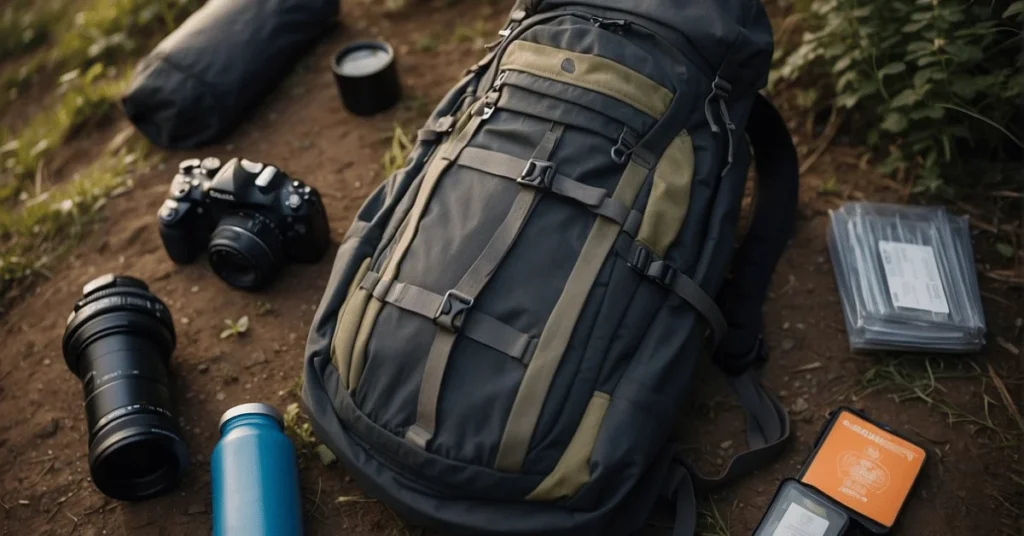
Embarking on a minimalist backpacking adventure requires strategic packing to ensure we carry only what is essential. We’ve honed our skills to pack smartly, saving space and reducing weight without sacrificing comfort or utility.
Creating a Minimalist Packing List
Starting with a minimalist packing list helps us define the essentials. We focus on lightweight items that serve multiple purposes to maximize efficiency. Here’s a basic structure we follow:
- Clothing
- Base layers
- Insulating layers
- Waterproof shells
- Footwear
- Versatile walking shoes
- Sandals or flip-flops (for showers or relaxation)
- Navigation Tools
- Maps and compass or a GPS device
- Toiletries
- Multi-purpose soap
- Toothbrush and paste
- Compact towel
- Miscellaneous
- First-aid kit
- Knife or multi-tool
- Headlamp or torch
How to Use Packing Cubes
Packing cubes are our secret weapon for staying organized. We assign each cube a category—clothing, electronics, toiletries—so we can find items quickly. They also compress items, making it easier to fit everything into our minimalist travel backpack.
Choosing Versatile Clothing and Footwear
We select clothing that can be layered and adapt to varying weather conditions. Fabrics that wick moisture and dry quickly are ideal. Our footwear choice leans towards light and sturdy shoes that are comfortable for long walks yet stylish enough for a casual evening around town. This combination allows us to be prepared for a spectrum of activities with minimal luggage.
Our Thoughts on Tech and Gadgets
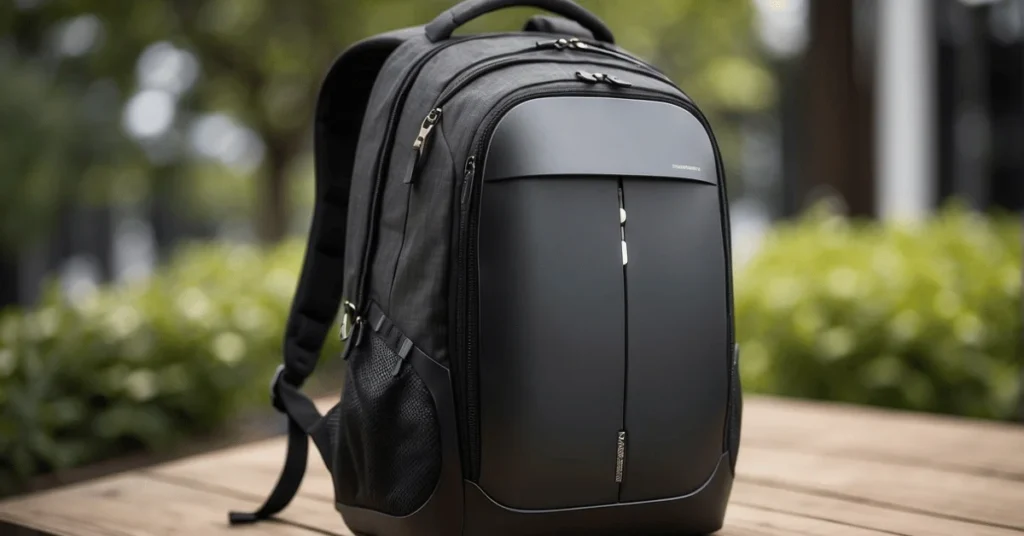
When it comes to minimalist backpacking, we prioritize what tech we bring along—for us, it’s about traveling light without sacrificing the essentials.
Prioritizing Electronics
In the realm of electronics, evaluating necessity versus desire is crucial. We bring along only what serves a multifunctional purpose. For instance, a smartphone isn’t just for communication; it’s our navigator, e-reader, and camera. A high-quality phone can often replace bulkier DSLR or mirrorless cameras for casual photographers. For those capturing higher-quality images or professional work, a compact mirrorless camera strikes the perfect balance between quality and portability. The adventurous types who are into action shots might find a GoPro indispensable.
Managing Chargers and Accessories
The key to managing chargers and accessories is consolidation. We prefer:
- Universal chargers
- Multi-port USB plugs
- Cable organizers
Laptops for us are optional unless work is on the agenda. We often opt for tablets or rely entirely on our phones. Here’s how we keep everything powered up with minimal fuss:
| Device | Power Solution |
|---|---|
| Phone | USB-C with fast charging |
| Camera | Portable charging case |
| GoPro | Multi-battery charger |
| Laptop/Tablet | Universal travel adapter |
Charting a course for a hassle-free tech experience means pairing down to what’s truly essential and ensuring that each item justifies its place in our backpack.
Please Stay Healthy and Safe
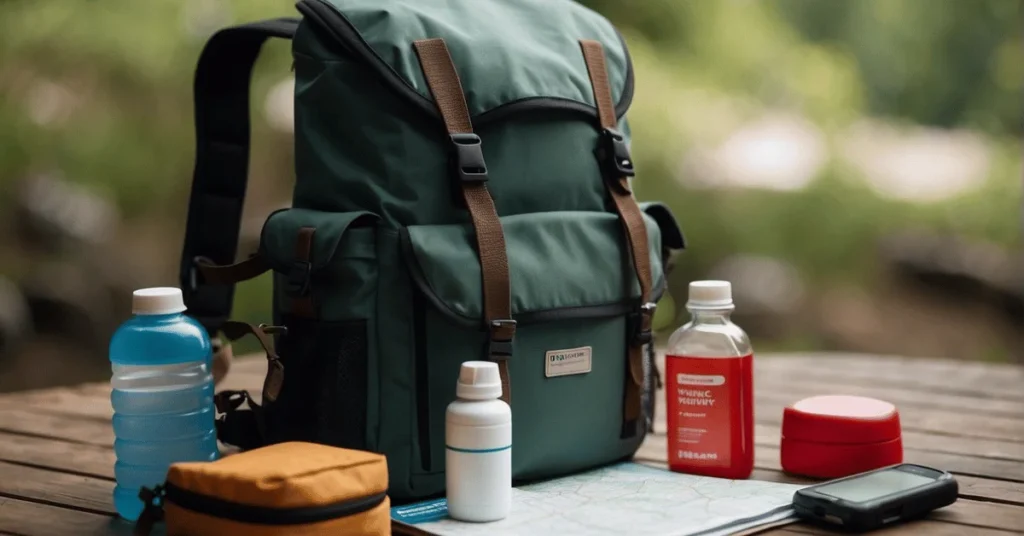
When we embark on our minimalist backpacking adventures, the excitement often takes precedence, but our well-being on the road is paramount. Prioritizing health and safety keeps us ready to enjoy every step of our journey. Ensuring we’re prepared with a robust health kit and acquainted with our travel insurance details, we can tackle unforeseen circumstances with confidence.
Staying Healthy on the Road
Medicine: A compact yet comprehensive first-aid kit is our ally against minor ailments and injuries. Essential items include bandages, antiseptics, pain relievers, and personal medications, alongside vitamin C or multivitamins to bolster our immune systems during the trip. It’s crucial to carry enough prescription medicine to last our voyage, and a copy of the prescription in case we need to resupply.
Traveling exposes us to new environments and health challenges, so keeping our vaccinations up to date is essential. And let’s not forget the universal solvent – water. Staying hydrated is simple yet pivotal to maintaining our health.
Travel Insurance and Emergency Preparedness
Insurance: Before we set out, understanding and obtaining adequate travel insurance is non-negotiable. Our insurance should cover medical treatments, emergencies, and trip cancellations.
Passport: A scanned copy of our passport should be accessible online in case we lose the original. In emergencies, knowing the location of our country’s nearest embassy can be a lifeline.
By preparing carefully, we ensure that our minimalist backpacking experience is as safe as it is exhilarating, protecting our health and peace of mind along the way.
Our Suggestions for Logistics and Planning
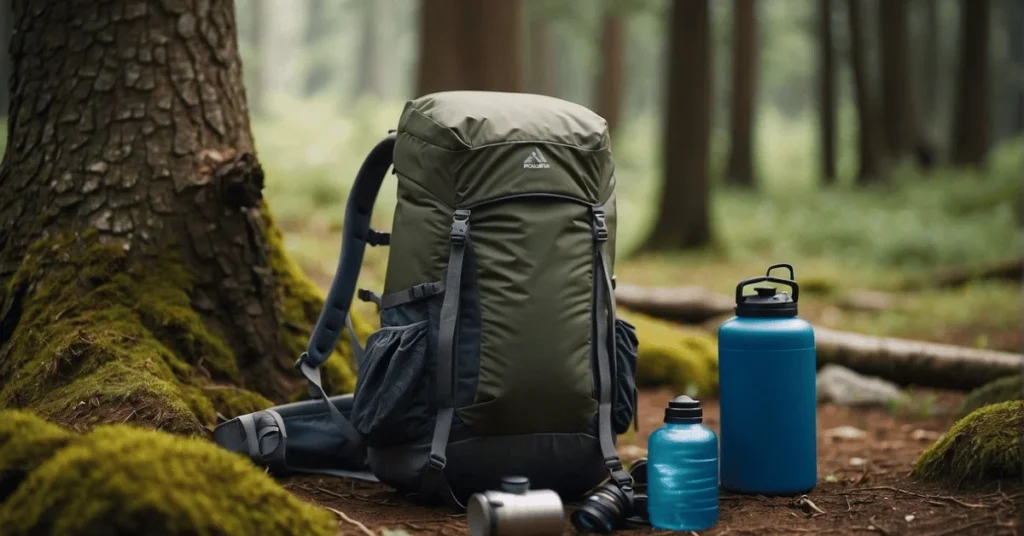
When we set out on a minimalist backpacking adventure, preparation is crucial. By focusing on weather patterns, affordable travel options, and baggage restrictions, we can streamline our journeys and avoid unnecessary complications.
Weather Considerations
Understanding the climate of your destination is a fundamental part of planning. We recommend checking Seasonal Weather forecasts and packing accordingly to ensure comfort without overpacking. For instance, lightweight, layerable clothing can adapt to changing conditions and save space in your backpack.
Budgeting for a Minimalist Journey
Travel doesn’t have to break the bank, especially with budget airlines as an option. We suggest comparing prices earlyand being flexible with travel dates to snag the best deals. Planning ahead can also mean investing in a travel insurance plan that covers flight cancellations or baggage loss.
Avoiding Extra Baggage Fees
Airlines have strict baggage policies, and keeping our luggage lightweight and compact is essential to avoid extra fees. We leverage packing cubes and compression bags for efficient use of space. Also, wearing your heavier items during the flight can make a significant difference in the weight of your checked baggage.
Frequently Asked Questions
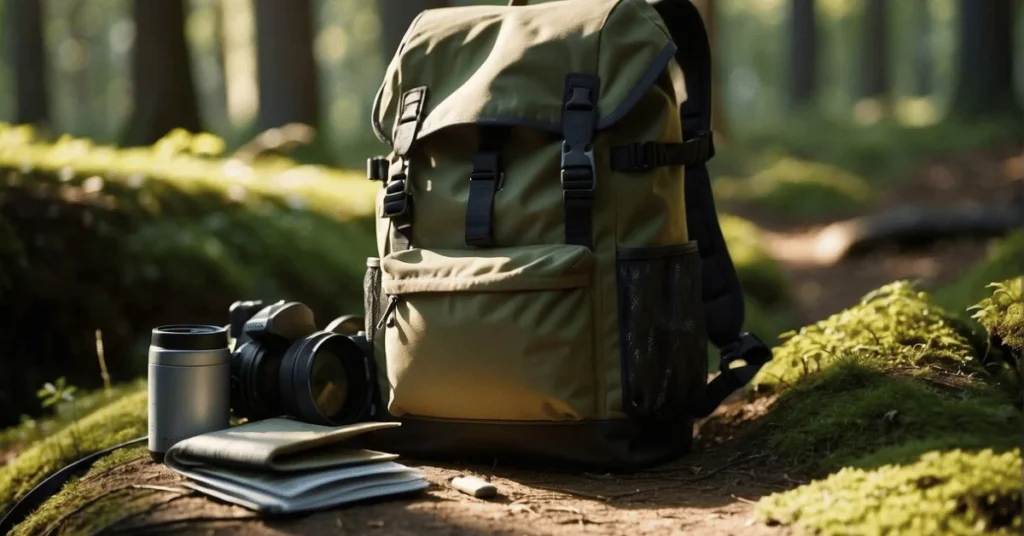
Embarking on the adventure with minimalist backpacking can really help us focus on the experience rather than the gear. It’s about bringing only what’s essential and knowing your pack inside out. Let’s dive into some of the most common queries to set you on the right path.
What are the essential items for minimalist backpacking?
Our core gear should include a shelter, sleeping system, clothing appropriate for the climate, navigation tools, a water purification method, and a compact first aid kit. Everything else is subject to our specific needs and the destination.
How do I choose the best ultralight backpacking pack?
Selecting an ultralight backpacking pack requires a balance of comfort, durability, and weight. Look for packs with a simplistic design, yet enough room for your essentials. Prioritize packs with good support and fit to your torso.
What is considered the ‘Big Four’ in ultralight backpacking gear?
The ‘Big Four’ includes our backpack, shelter, sleeping bag, and sleeping pad. These typically are the heaviest items in our pack but are essential for safety and comfort.
What guidelines should a beginner follow to adopt minimalist backpacking practices?
We should start by scrutinizing each item’s necessity, opting for multipurpose gear, and honing our backpacking skills to compensate for fewer conveniences. Gradually reducing pack weight helps us transition smoothly into minimalist backpacking.
At what pack weight can I be classified as an ultralight backpacker?
Being an ultralight backpacker means our base pack weight—excluding consumables like food, water, and fuel—is under 10 pounds. It’s a challenging but rewarding threshold to achieve.
How should gear weight be distributed for optimal comfort in minimalist backpacking?
For best comfort, heavy items should be packed close to our back and centered in the pack. Lighter items go toward the bottom and top, maintaining a balance that doesn’t shift too much during movement.
Thank you for exploring our guide on minimalist backpacking. Have your own minimalist travel tips or unique gear suggestions? Share them with us in the comments below! We’re excited to hear from you and continue the conversation.

